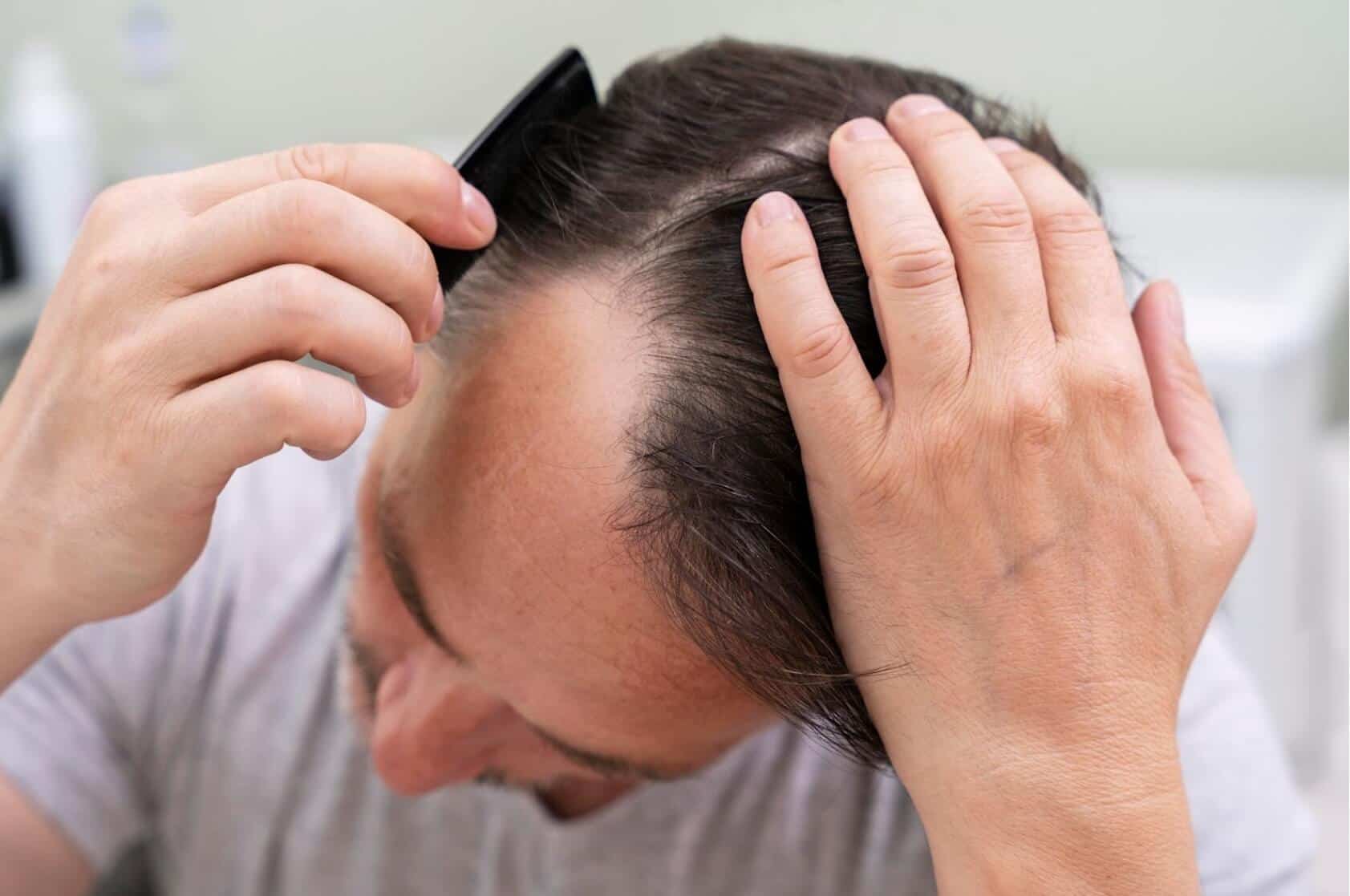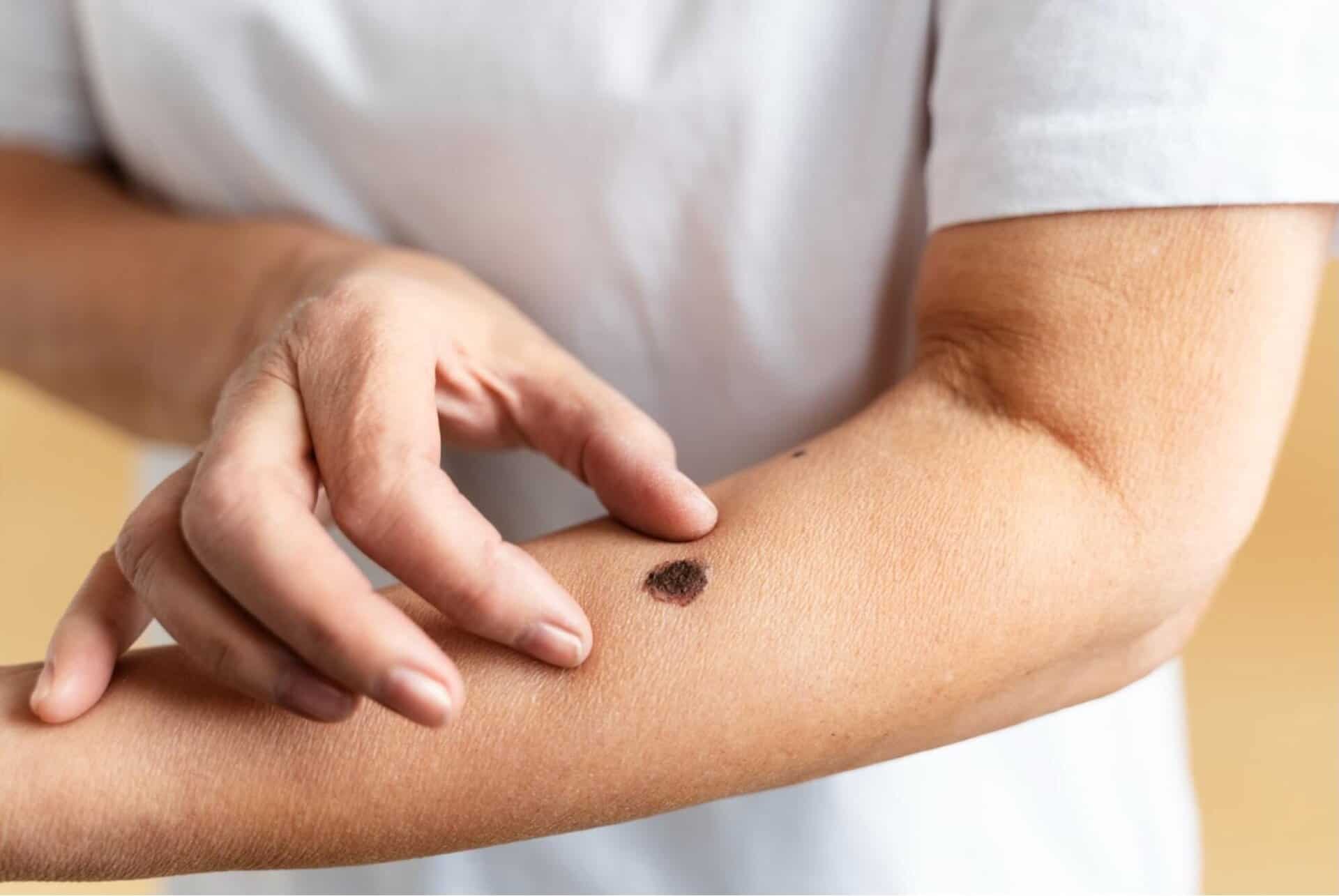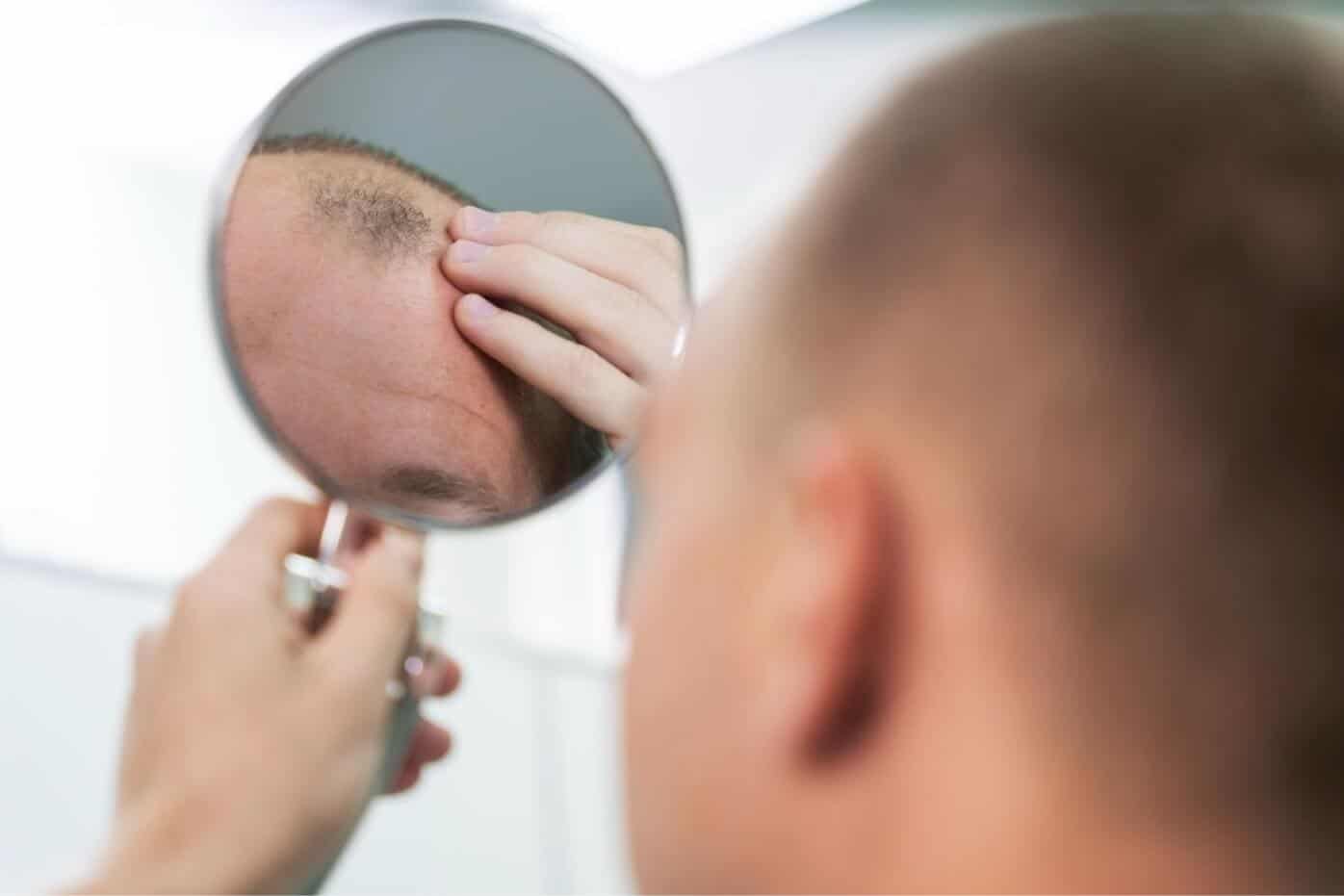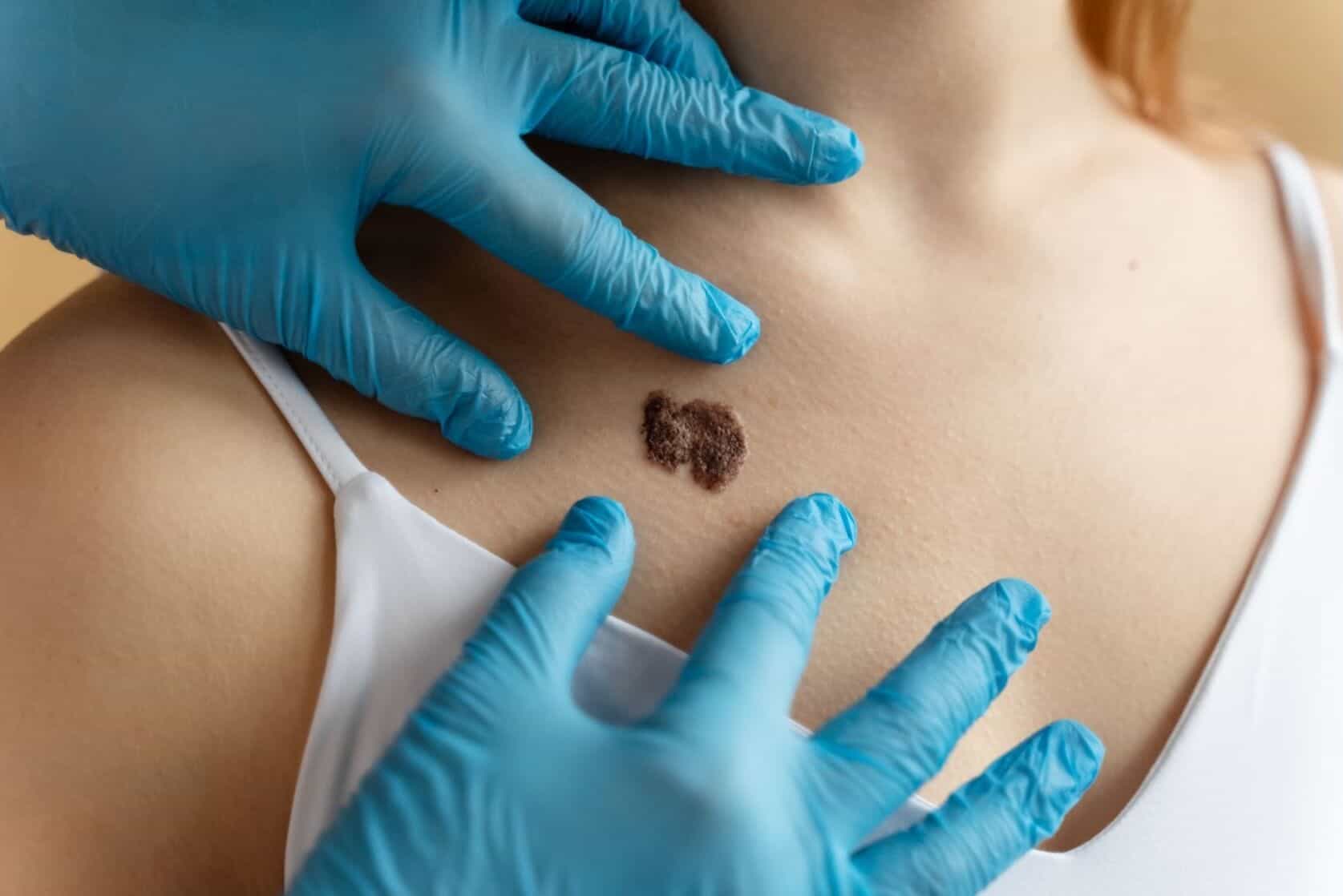- Dr Suhail Alam
- Reading Time: 5 Mins
Eyebrow hair loss affects thousands of people annually, causing both cosmetic concerns and indicating potential underlying health issues. Surprisingly, eyebrow transplants rank as the second most common hair restoration procedure after scalp transplants. This tells how many people have to deal with this issue.
Let’s explore why eyebrows thin out and what science tells us about the most effective ways to restore them.
Key Takeaways
- Eyebrow loss often indicates underlying health issues like alopecia, thyroid disorders, or nutritional deficiencies, requiring proper diagnosis.
- Effective treatments range from medications (minoxidil, corticosteroids) to eyebrow transplants, depending on the specific cause.
- Prevention through gentle grooming, proper nutrition, and stress management is crucial
- for maintaining healthy eyebrows.
Table of Contents
Common Causes of Eyebrow Hair Loss
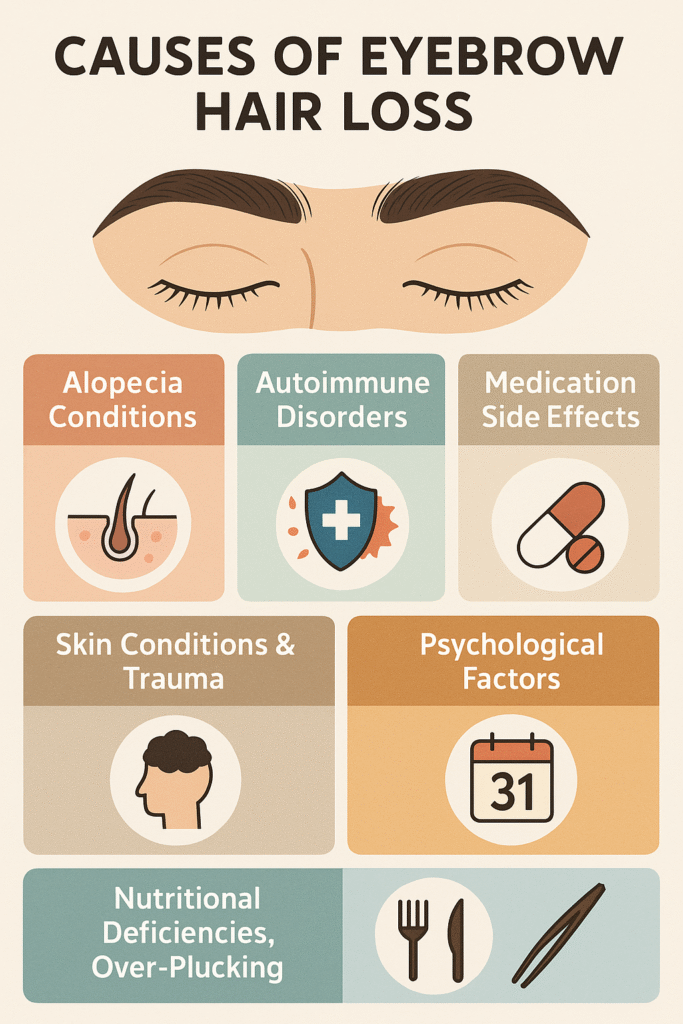
Eyebrow thinning, medically termed hypotrichosis or madarosis, can be just as distressing as scalp hair loss. Here are the primary causes:
Alopecia conditions
Alopecia areata occurs when your immune system attacks hair follicles, causing patchy hair loss. A 2022 study found that nearly 20% of alopecia areata patients experienced eyebrow loss.
Androgenetic alopecia (pattern baldness) doesn’t just affect your scalp. Your eyebrows can thin from the same hormonal influences.
Frontal fibrosing alopecia causes scarring and hair loss in both the scalp and eyebrow regions. Research showed that certain treatments could stimulate eyebrow regrowth in these cases.
Autoimmune disorders and health conditions
Conditions like lupus and localised scleroderma frequently trigger eyebrow loss.
Thyroid disorders affect eyebrow fullness significantly. The distinctive “Queen Anne sign” (loss of the outer third of eyebrows) often signals hypothyroidism.
Some people have congenital eyebrow loss due to genetic conditions like ectodermal dysplasia, Fraser syndrome, or Meige syndrome.
Medication side effects
Cancer treatments commonly cause temporary hair loss everywhere, including eyebrows. Research revealed that nearly 50% of breast cancer patients undergoing chemotherapy reported eyebrow thinning.
Certain medications, including Niacin, Thallium, and high-dose Vitamin A, can trigger eyebrow shedding as a side effect.
Skin conditions and physical trauma
Dermatitis, psoriasis, and even serious conditions like facial skin cancers can lead to eyebrow hair loss.
Scarring from accidents, tattoo removal, or mechanical damage to the skin often results in permanent eyebrow loss if hair follicles are damaged.
Psychological factors
Chronic stress triggers telogen effluvium, where emotional shock forces hair follicles into a dormant state.
Trichotillomania, a compulsive hair-pulling disorder, often targets eyebrows. Specialists can identify this condition by examining broken hairs and skin irritation patterns.
Ageing and natural hair thinning
As we age, our hair follicles naturally diminish in quality. This process often appears more pronounced in eyebrows than scalp hair.
A 2023 dermatology study confirmed ageing reduces length, thickness, and pigmentation of eyebrow hairs.
Lifestyle factors
Nutritional deficiencies play a major role in eyebrow thinning. Studies highlight that insufficient zinc, iron, and vitamins A, C, E, B-7, B-12, and D all contribute to poor hair growth.
Excessive plucking or harsh makeup removal techniques gradually damage follicles, sometimes permanently.
How Eyebrow Hair Loss Is Diagnosed
Professional diagnosis is crucial for effective treatment. A dermatologist or trichologist (hair specialist) will:
- Take a detailed medical history and perform a clinical examination.
- Use a dermoscope, a painless instrument that illuminates and magnifies your eyebrows and underlying skin.
- Sometimes, employ tools like the Brigham Eyebrow Tool to assess severity for conditions like alopecia areata.
- Conduct a pull test, gently tugging a few eyebrow hairs to check if they detach easily.
- Order blood tests if needed to identify underlying health conditions or nutritional deficiencies.
Effective Treatment Options for Eyebrow Hair Loss
Treatment should target the underlying cause for the best results. Here is a quick overview of the treatment options you have for eyebrow hair loss:
| Treatment Option | Best For | Average Cost | Recovery Time |
|---|---|---|---|
| Corticosteroids | Alopecia areata, inflammatory conditions | £50-£200 per treatment | Immediate |
| Minoxidil | General thinning, androgenetic alopecia | £15-£30 monthly | 3-6 months |
| Bimatoprost | Moderate thinning, hypotrichosis | £80-£120 monthly | 2-4 months |
| Eyebrow Transplant | Permanent hair loss, scarring | £3,820 one-time | 7-14 days |
Medication options
Corticosteroids fight inflammation in conditions like alopecia areata and psoriasis. They come in topical, injectable, and oral forms.
Minoxidil (Rogaine) stimulates follicles and extends the growth phase. A Journal of Dermatology study proved 2% minoxidil solution enhanced eyebrow density compared to placebo.
Bimatoprost (Latisse), primarily marketed for eyelash growth, effectively stimulates eyebrow regrowth in many patients..
Eyebrow transplant procedure
This minimally invasive surgery harvests 200-400 hair follicles from the back of your head and places them precisely in thinning eyebrow areas.
The entire procedure takes a few hours under local anaesthetic, with patients returning home the same day.
Results generally look natural, though transplanted hairs require occasional trimming as they retain the growth characteristics of scalp hair.
Natural remedies and alternative therapies
While evidence remains limited, many patients report benefits from:
Acupuncture may stimulate blood flow to hair follicles, though scientific evidence remains limited.
Castor oil is traditionally used for its potential hormone-balancing properties, particularly for hair loss linked to hormonal imbalances.
Nutritional supplements, including Omega-3, Omega-6 fatty acids, zinc, biotin, and antioxidants, support overall hair health. A study found supplements containing specific fatty acids and phytosterols improved hair density after six months of consistent use.
How to Prevent Eyebrow Hair Loss
Prevention is always preferable. Here are effective strategies:
Avoid over-plucking. Focus on shaping rather than thinning your eyebrows, as over-plucked brows may never fully recover.
Maintain a nutrient-rich diet. Ensure adequate intake of protein, vitamins, minerals, and healthy fats. A 2017 study in the Journal of Cosmetology & Trichology found that supplements containing fatty acids and phytosterols improved overall hair density and health.
Manage stress levels through regular exercise, adequate sleep, and relaxation techniques to prevent telogen effluvium.
Review your medications with your doctor if you notice eyebrow thinning, as adjusting dosages or switching treatments might help.
Adopt gentle beauty practices. When removing makeup, use gentle cleansers and avoid aggressive rubbing. Choose eyebrow products without harsh chemicals
Take Action on Your Eyebrow Hair Loss
Eyebrow transplantation offers the most permanent and natural-looking solution for those with significant eyebrow hair loss, particularly when caused by scarring, trauma, or genetic factors.
At Aventus Clinic, we specialise in this minimally invasive procedure that can transform your appearance and confidence in a single day. Our expert surgeons meticulously place each follicle to ensure natural growth patterns and aesthetically pleasing results.
Not sure if a transplant is right for you? We provide free online assessments to evaluate your specific condition and recommend the most appropriate solution. Explore your options and learn more about our specialised eyebrow transplant procedures today.
- Sources
- https://pmc.ncbi.nlm.nih.gov/articles/PMC9870835/
- https://www.sciencedirect.com/science/article/abs/pii/S1526820924002386
- https://pmc.ncbi.nlm.nih.gov/articles/PMC10264316
- https://www.researchgate.net/publication/259958200
- https://pubmed.ncbi.nlm.nih.gov/25573272/
- https://www.researchgate.net/publication/318354495





